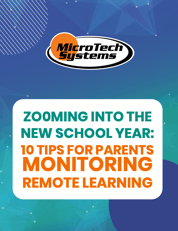
Small and medium-sized businesses comprise about 99% of all businesses in the United States. SMBs also claim 47.5% of all United States employees according to a 2018...
Due to the COVID-19 pandemic, most SMBs have had to adopt a remote working arrangement. This has been successful for most SMBs so far, to the surprise of many. Most SMBs thus intend to maintain this model even after the pandemic is over. But, due to lockdown measures imposed by governments, most remote workers are struggling to work with children in the house that need to get on their Google Meet. Employers need to be understanding because workers have more than work to attend to. This means that sometimes during work, employees will need to attend to other responsibilities like helping their teen sign into Zoom for class. Yet, this model has allowed SMBs to cut costs of huge office space to accommodate employees. In this article, we look at IT solutions that will ease SMB transition to remote work model in the long term.
Unlike working in an office environment, remote working is more prone to breaches. MFA ensures that only authorized users have access to a restricted system. Once these users type in their login credentials, the system sends a one-time password to another device for approval. This prevents unauthorized access even if someone has 'stolen' the user's login credentials. Additionally, biometric methods of authentication such as fingerprint and face recognition scans provide greater security.
SMBs should adopt various practices that will prevent unauthorized access. PCs should have a very short time-out period so that they automatically lock when not used for a short period. Besides, all non-work features should be unavailable during work hours. Automation is necessary for functions such as copying data to an external device and printing. The system should prompt you to input a passcode to complete functions to prevent breaches. Moreover, SMBs should install antivirus and firewall programs on top of basic protection. This prevents hackers from powerful hacking tools from accessing your system. These security programs also alert the IT Department of attempted hacks so that they can take preventive measures.
Security breaches are commonplace, especially with an increase in user traffic. It is, thus, difficult to spot malicious activity making it easier for hackers to access confidential information. SMBs should configure their VPNs in such a way that malicious activity is easy to recognize. Experts recommend the use of a full tunnel VPN so that all internet traffic goes through it. But a full tunnel VPN uses more bandwidth than a split-tunnel VPN. A split tunnel VPN, in comparison, only allows specific internet traffic but is more prone.

End-to-end encryption for communication between remote workers is necessary to protect data. Should hackers manage to hack into the workers' connection, they will be unable to decipher the information in transmission. This not only applies to emails but also voice and video calls so that only the sender and receiver have access.
SMBs should store customer information securely to prevent third party access through hacks. They should have a comprehensive system that allows remote workers to access data without the risk of breaches. Further, SMBs should automate data collection processes to prevent accidental vulnerability to hackers. Hackers find it easy to hack into systems during data collection. Thus, systems that are not automated risk disclosing customers’ financial information. Automation ensures that there is very minimal human interaction with the system and reduces the margin for error.
Every SMB should run regular checks to find out that the system has not been subject to attempted hacks. Every PC should have these security checks scheduled to run at particular times and send feedback to the IT Department. This discourages prospective hackers, as their attempts are quickly dealt with.

SMBs should adopt a system that keeps track of all data shared with outsiders by their remote workers. Taking precautions does not always prevent human errors and as such, Data Loss Prevention (DLP) tools are useful. These tools track all data shared to outsiders and block the sharing of sensitive information altogether.
SMBs ought to adopt standards for remote working at home. These will act as guidelines for their employees to prevent cases of negligence that would be too costly for the business.
These tips include:
The COVID-19 outbreak may have been unfortunate but it has spearheaded a remote working culture. For huge tech companies such as Facebook, the goal is to have at least half the workforce working remotely by the end of this decade. But, since the house is not like a normal workplace, there are distractions. Sometimes, kids will interrupt a Zoom call, other times it will be a poor connection.
Employers and employees alike are taking a more empathetic approach to conduct business for all, not just those working remotely. This is because they are already doing their best to adopt a working model they are not used to, and hey, let's not forget; we're all in this together.
If you're looking for help with Google Meet, we've got a guide for that: 5 Easy Google Meet Tips that Everyone Needs to Know.
If zoom is the thorn in your side right now, we're got a guide for that, too:

Small and medium-sized businesses comprise about 99% of all businesses in the United States. SMBs also claim 47.5% of all United States employees according to a 2018...

Making the case for cloud storage is easy. Just ask anyone who has lost files due to system crashes or defunct devices. Now widely...